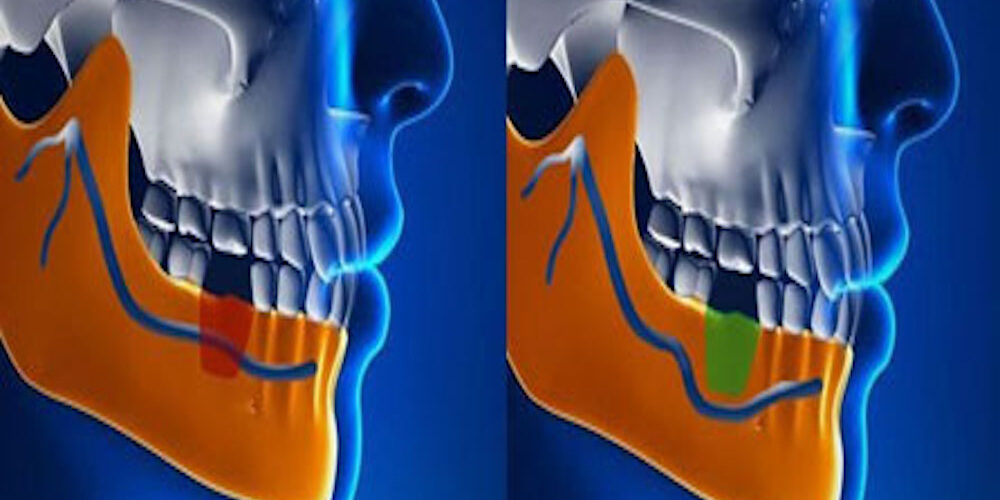The inferior alveolar nerve supply sensation to the lower lip, chin, etc. In case of severely atrophic mandible the nerve need to be reposition to make space for implant placement. But sometimes, there can be postoperative numbness in the lower lip and chin region. So, to help patient decide, the dental professional can give a block before the procedure with a longer acting local anesthetic like Marcaine (8-16 hrs), similar to the postoperative anesthesia the patient may experience.

Before the procedure the Inferior Alveolar Nerve (IAN) need to be assess radiographically to locate the mental foramen. There are 2 nerve repositioning techniques: lateralization and transposition. For both the procedures a crestal incision with releasing incisions are made and the flap is reflected labially. Care to be taken during raising of the flap to preserve the periosteum and neurovascular bundle.

Figure: (A) Transposition and (B)Lateralization.
Inferior Alveolar Nerve transposition (IANT)
A complete osteotomy is done and a window is created to avoid damage to the inferior alveolar nerve. For complete mobilisation, the incisive branch or the terminal branch located about 5 mm away from the mental foramen is section.

IAN Lateralization (IANL)
For this procedure, a partial osteotomy is done distal to the mental foramen and a window is made. Dissection or sectioning of the terminal branches of the nerve or incisive nerve is not done thereby maintaining the integrity of the incisive nerve.

Then, in both the procedures the nerve is retracted away using a nerve hook and a gauze passing below the nerve and dental implant place bicortically for primary stability. The nerve is then reposition and is left to lie outside the mandibular canal. The gap between the bone window and implants can be fill with bone grafts and a resorbable membrane to prevent direct contact and finally suture.

The bone grafts can be taken from various parts of the body like chin, palate, etc. If more volume of bone grafts are require then it can be harvested from the hip, knee, etc as they give the best results. Moreover, allograft (graft obtain from cadavers) can also be use to increase bone volume as they are effective, safe and can stimulate new bone formation.

The decision to use either Transposition or Lateralization depend on the amount of stretching or mobilization of the nerve but stretching 10% – 17% of the original length can cause internal damage of the nerve fibers. So, Transposition is prefer over Lateralization in term of less stretching and hence, produces lesser side effects.
Postoperative measures
Antibiotics, Analgesics and corticosteroids are recommended. Moreover, using corticosteroids pre and post operatively helps reduce symptoms like inflammation, etc.
Advantages Of Nerve Repositioning
- Good primary implant stability (bicortical fixation)
- More number of implants can be place (improve denture strength)
- Simultaneous implant placement (reducing treatment time)
- Immediate loading possible (improve masticatory function)
- Implant survival rate is similar to conventional implant
Besides, it also increases occlusal force resistance, occlusal stability, chewing efficiency, TMJ and masticatory muscle balance, etc.
Disadvantages Of Nerve Repositioning
- The procedure damage the alveolar ridge anatomy
- Temporarily weakens the lower jaw (due to bone removal)
- Potential risk for osteomyelitis
- Patients with bruxism or poor occlusal relationship can increase the chance of implant failure.
Conclusion
Inferior alveolar nerve repositioning is a technique being use for around 2decades now with a good success rate. Sometimes, it is the only approach to achieve a fixed prosthesis in atrophic mandible. The technique is safe and has a high success rate. With precise planning, this technique can be successfully use in implant placement in edentulous atrophic mandible.

